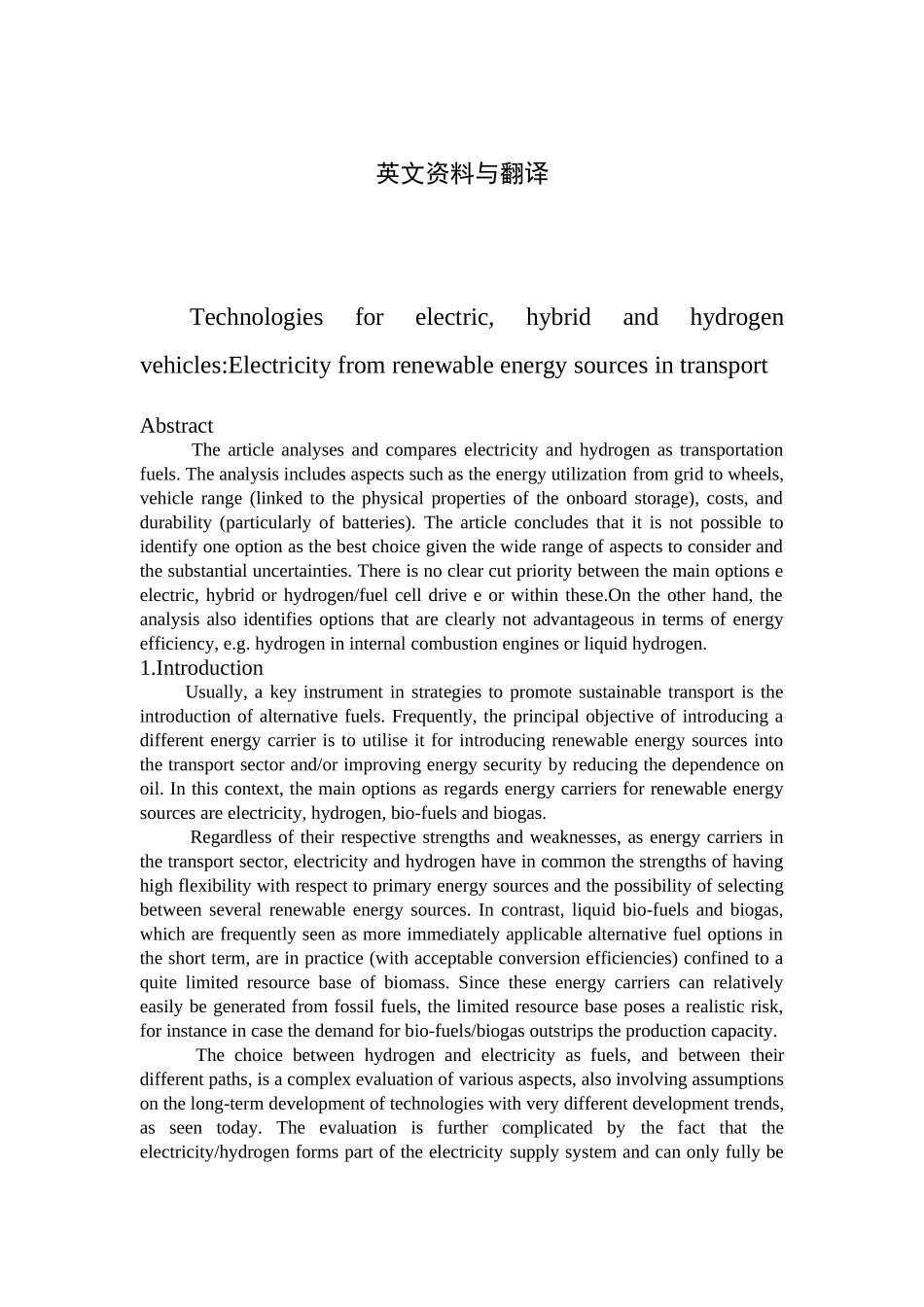英文资料与翻译Technologies for electric, hybrid and hydrogen vehicles:Electricity from renewable energy sources in transportAbstract The article analyses and compares electricity and hydrogen as transportation fuels. The analysis includes aspects such as the energy utilization from grid to wheels, vehicle range (linked to the physical properties of the onboard storage), costs, and durability (particularly of batteries). The article concludes that it is not possible to identify one option as the best choice given the wide range of aspects to consider and the substantial uncertainties. There is no clear cut priority between the main options e electric, hybrid or hydrogen/fuel cell drive e or within these.On the other hand, the analysis also identifies options that are clearly not advantageous in terms of energy efficiency, e.g. hydrogen in internal combustion engines or liquid hydrogen.1.Introduction Usually, a key instrument in strategies to promote sustainable transport is the introduction of alternative fuels. Frequently, the principal objective of introducing a different energy carrier is to utilise it for introducing renewable energy sources into the transport sector and/or improving energy security by reducing the dependence on oil. In this context, the main options as regards energy carriers for renewable energy sources are electricity, hydrogen, bio-fuels and biogas. Regardless of their respective strengths and weaknesses, as energy carriers in the transport sector, electricity and hydrogen have in common the strengths of having high flexibility with respect to primary energy sources and the possibility of selecting between several renewable energy sources. In contrast, liquid bio-fuels and biogas, which are freq...


